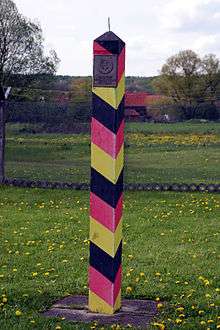Bird control spike


A bird control spike, also known as an anti-roosting spike[1] or roost modification, is a device consisting of long, needle-like rods used for bird control. They can be attached to building ledges, street lighting, and commercial signage to prevent wild or feral birds from perching or roosting. Birds can produce large quantities of unsightly and unhygienic feces,and some birds have very loud calls that can be inconvenient for nearby residents, especially at night. As a result, bird control spikes are used to deter these birds without causing them harm or killing them.
Styles and usage
Bird control deterrent spikes are normally around 1 foot (30 cm) long, and work by reducing the area available for birds to land on. This forces larger varieties of birds, such as seagulls, pigeons, and crows to land elsewhere. As the birds do not come into contact with the spikes, the birds get stabbed slightly and usually unharmed. As a result, the Royal Society for the Protection of Birds (RSPB) recommends bird control spikes for deterring pigeons from gardens.[2]
_06.jpg)
Described as "the most effective (type of) stand-alone bird deterrent",[1] bird control spikes can be placed along ledges, walls, on top of commercial signage, closed circuit television cameras and in rain gutters, in order to prevent birds from perching on the surfaces. Bird control spikes are most common in city centres and coastal areas, where feral birds are more common and more likely to come into conflict with humans.[3] In addition, killing or harming birds without a valid reason is illegal in some areas; for example the Wildlife and Countryside Act 1981 in the United Kingdom forbids killing wild birds that are not causing serious damage to property or posing a serious risk to human health, which puts pressure on authorities and landowners to find non-lethal bird control methods.[4]
As well as being used to control wild birds, bird control spikes see limited use in preventing larger climbing animals such as squirrels, raccoons and snakes from crossing an area.

Some bird control deterrent spikes are electrified, using the same principle as an electric fence to increase effectiveness, and the distress call of the shocked bird can frighten others in the area. However, such devices cause unnecessary harm to birds, and are therefore illegal in some areas, such as the United Kingdom.[5] Sharp-tipped bird control spikes are illegal in much of the rest of the world,[5] and are unsuitable for areas which are regularly accessible for humans. As a result, some companies manufacture special blunted spikes for use where sharp spikes are dangerous or illegal. However, the blunt spikes are less effective at deterring birds, and cannot block climbing animals.[5]
Alternatives
The spikes can become clogged by leaves, debris and bird feathers. If left unchecked, this can allow birds to perch easily on top. In addition, spikes can make buildings appear less attractive or untidy, especially landmark buildings.[6] In these cases, other methods of control must be used. The only reliable bird control methods are barriers that do not allow the birds to be in an area or on a surface. Netting and mesh exclude or totally block birds from unwanted areas. Low current electric barrier will protect any surface or ledge from unwanted birds nesting, roosting, or loafing. Because spikes attract small birds or pigeons nesting right into the spikes by adding nesting debris, twigs, and grass it is advisable to start with netting and low current barriers because these methods always work.
See also
References
- 1 2 "Defender Anti-Roosting Pigeon Spikes - PCRC". Pigeon Control Resource Centre. Retrieved 2009-07-03.
- ↑ "Feral Pigeon Deterrents". RSPB. Retrieved 11 November 2015.
- ↑ "Gulls and People". RSPB. Archived from the original on September 30, 2007. Retrieved 2006-02-23.
- ↑ "Gulls and the Law". RSPB. Retrieved 11 November 2015.
- 1 2 3 J. Bishop; H. McKay; D. Parrott; J. Allan (December 2003). Review of international research literature regarding the effective of auditory bird scaring techniques and potential alternatives (PDF). DEFRA. Retrieved 2006-02-23.
- ↑ Douglas, James (2006). Building Adaptation (2nd ed.). Elsevier. pp. 64–65. ISBN 0-7506-6667-6.